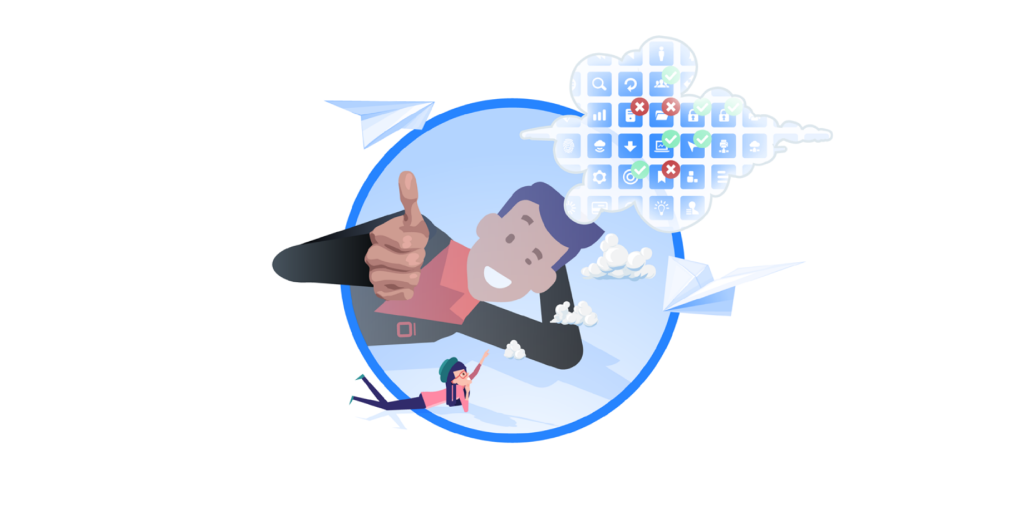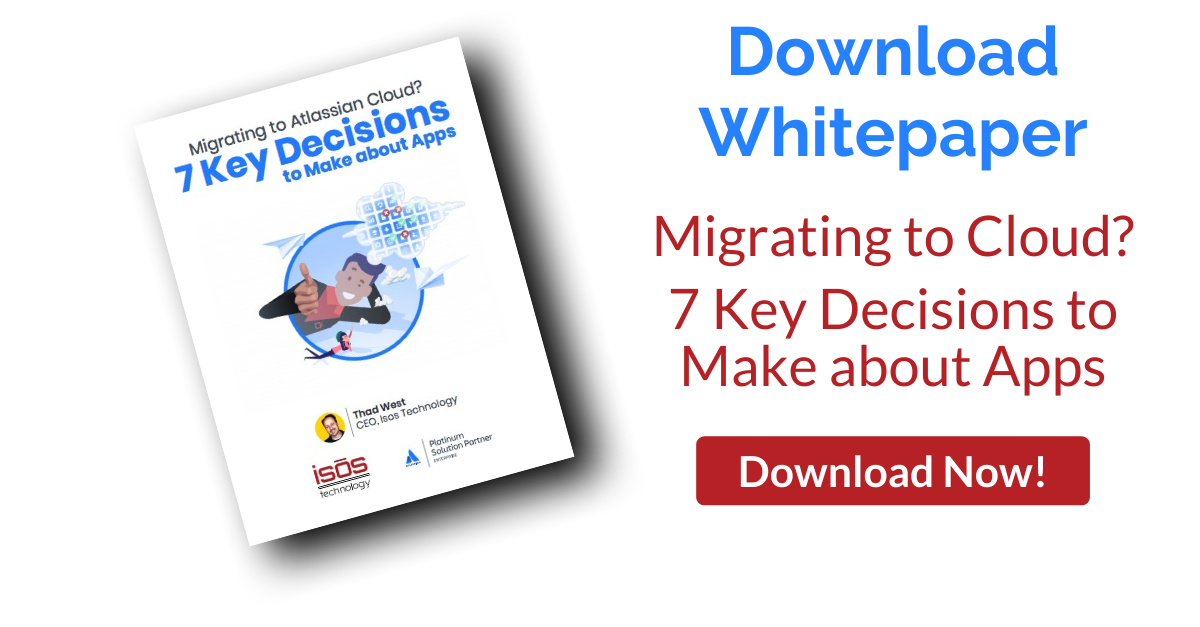 At Isos Technology, we talk to companies all the time that want to migrate from Atlassian Server or Data Center to Atlassian Cloud but are postponing the move because of their dependence on third-party Marketplace apps. We get it–the ability to customize and optimize the way you use the tool through apps can be a distinct advantage. And hey, we use them, too! But we’re here to tell you that not only is the feature parity gap closing, there are also a ton of workarounds.
At Isos Technology, we talk to companies all the time that want to migrate from Atlassian Server or Data Center to Atlassian Cloud but are postponing the move because of their dependence on third-party Marketplace apps. We get it–the ability to customize and optimize the way you use the tool through apps can be a distinct advantage. And hey, we use them, too! But we’re here to tell you that not only is the feature parity gap closing, there are also a ton of workarounds.
The upshot is this: there’s no need to postpone migrating to Atlassian Cloud and miss out on everything it has to offer because you’re dependent on apps.
Why are Apps Built for Atlassian Cloud Different from Server and Data Center Versions?
Since Atlassian Cloud’s web-based architecture is fundamentally different from Server and Data Center, Atlassian and its Marketplace vendors must build Cloud versions of their apps from the ground up, which has advantages and disadvantages. On the plus side, the redesigned apps can take full advantage of Cloud infrastructure, with tighter integration and better functionality. However, vendors may not have built Cloud versions of their apps yet, or the apps that have been built might not have feature and functionality parity.
How Much Do These Differences Matter?
When organizations migrate to Cloud, however, their processes often evolve. This is because migrations are a great opportunity to streamline processes and put some governance in place, and also because there are differences in the native functionality between Server and Data Center versions of Atlassian tools and their Cloud counterparts.
So, since your processes will likely evolve a bit when you migrate, some of the apps you’ve been dependent on may no longer be necessary, or at least not as critical. Also, new or different sets of Cloud apps may actually offer increased functionality, therefore replacing multiple on-prem apps. Another option also exists—Atlassian Solution Partners like Isos Technology may be able to offer custom scripting solutions to bridge any feature gaps.
The big takeaway here is this: it may take some ingenuity and effort, but the vast majority of parity issues can be resolved. Yes, even if one of the apps in question is ScriptRunner! (We won’t get into it here, but we’ve written a whole white paper about what you need to know about migrating from ScriptRunner for Jira to ScriptRunner for Jira Cloud.)
Looking Ahead: Atlassian Forge
Another way Atlassian is investing in Cloud–one that over time is going to really change the app landscape–is through its purpose-built Cloud development platform, Forge. Forge is designed to streamline and simplify app development, so that third-party Marketplace vendors can quickly, easily, and securely innovate—and Cloud customers can benefit from that innovation. Since Atlassian hosts the code for Forge apps, it means the apps are more tightly integrated with the company’s core products, so they run faster and with fewer issues. It also means they come with the same enterprise-grade security that Atlassian Cloud does.
Just as the future of work is in the cloud, the future of Atlassian apps is in Forge, and it is likely where the greatest app innovation will be found.
Must-Read Resources
Want to dig a little deeper into the subject? Check out these white papers:
- To learn more about migrating third-party apps, read our whitepaper: Migrating to Atlassian Cloud? Seven Key Decisions to Make about Apps.
- To learn more about migrating ScriptRunner, read our whitepaper: The Essential Guide to Migrating to ScriptRunner for Jira Cloud.
Sign up to receive more great content
Learn more about Atlassian and how Isos can help by signing up to receive our latest blogs, eBooks, whitepapers and more.














